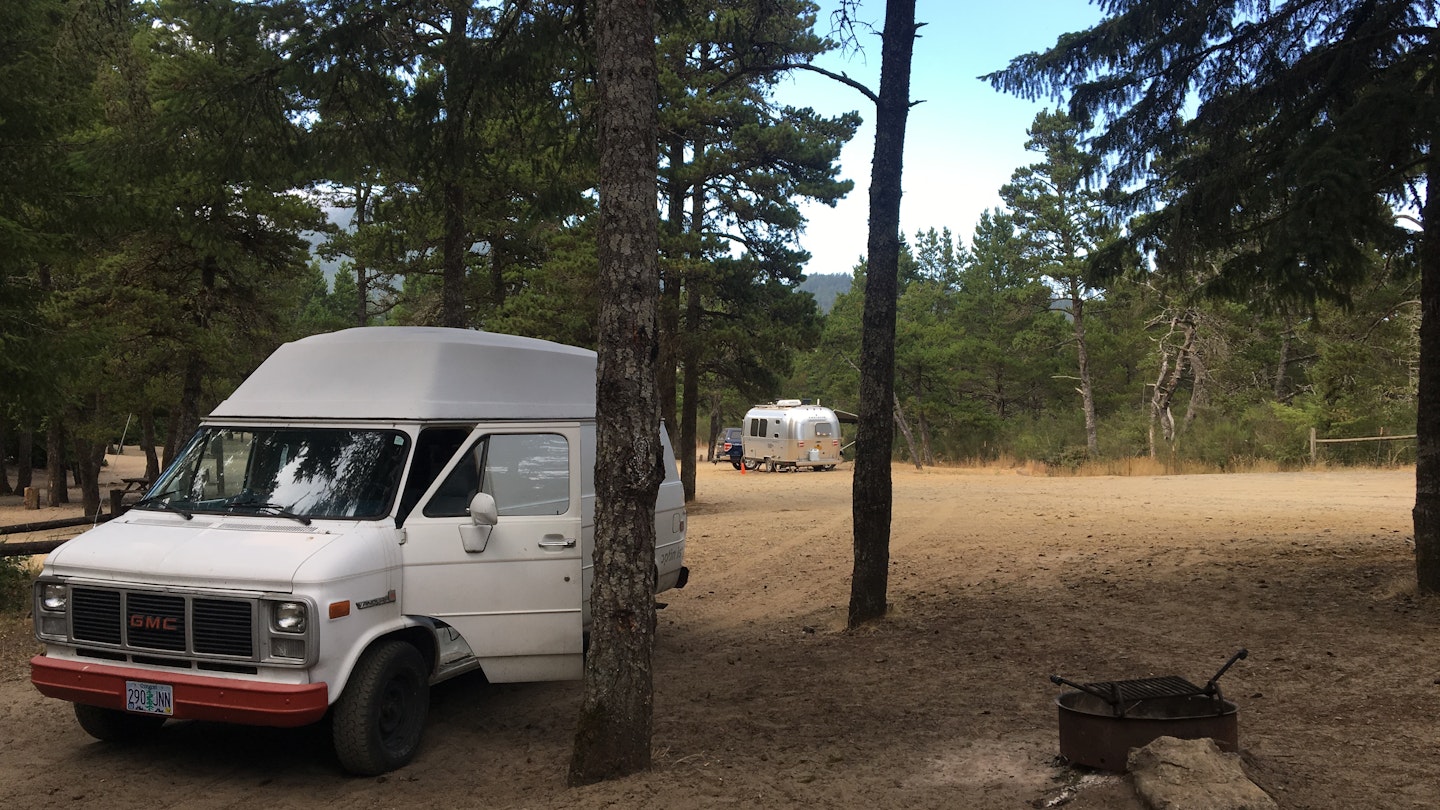Responsible Van Camping Tips
When I was traveling in my camper van, I had access to pockets of the world I might never have discovered otherwise. Bumpy dirt roads meandering through public land were the entryways to quiet pockets of wilderness where I could find a place to park. In the morning, I’d wake up surrounded by nature that felt mostly untouched.
Of course, it wasn’t untouched. I was there, making an impression with both my human and large vehicle footprints: driving with headlights cutting through the dark; parking just off the dirt road where my tires pressed into the earth; walking around with my dog; and leaving unavoidable footprints all over these wild places. Despite occasional solitude, more campers had come before me, and more would come after.
This secluded image of van camping has inspired waves of people to embrace “van life.” Some are moving into vans full-time. Others are renting them for a weekend or a cross-country road trip. All of them will have the option to camp at established campgrounds or “boondock” further away from crowds and facilities. Van camping can offer access to special places, but with that access comes big responsibility.
Understanding ‘Leave No Trace’
Every responsible camper should know and understand how to “leave no trace.” The Leave No Trace Center for Outdoor Ethics outlines seven principles all campers should read and understand. When it comes to responsible van camping, there are additional details to help you roam respectfully.
Educate Yourself on Your Camping Location
If you’re trying to escape the crowds, you might find yourself camping where there are no posted rules, no park rangers, and no one to explain the significance of the cryptobiotic soil you could be trampling in the desert while searching for the best place to watch a sunset. (Cryptobiotic soil is a living crust of earth, created by algae, cyanobacteria, and fungi — it’s vital to the health of certain ecosystems and does not like to be walked on.)
Prior to venturing out to camp with your van, visit the nearest ranger station or public park where knowledgeable rangers can provide important information about the place you wish to explore. Ask questions about wildlife, the local ecosystem, any necessary permits in the area, and the best places to park.
Additionally, read up on the nature of the place you’re visiting. It’s important to know what type of wildlife might be present and what vulnerabilities exist between you and the local ecosystem.
Proper Waste Management
Camper vans were designed to carry many of the comforts of home. Consequently, they can also carry more waste than you might create while camping in a tent. There are various ways to properly contain and dispose of waste, depending on where you’re van camping and what facilities you have available. Understanding correct practices is essential for responsible van campers.
Amanda Winther of The Van Project has been living in a camper van for three years. Readers often ask her for advice on grey and black water disposal. Gray water is the dirty water from brushing your teeth, washing yourself, your dishes, etc. While it may seem harmless to dump, especially with biodegradable soaps, gray water can still attract wildlife and pollute natural water sources.
“The best option is to always strain and collect your grey water and carry it and all other waste out with you,” says Winther. If choosing to dispose of grey water or pee outside, adhere to the Leave No Trace rule and scatter it at least 200 feet from your campsite, water, trails, or roads.
Black water, on the other hand, is what collects in your camper van’s toilet (if equipped). Unlike grey water, black water should only be disposed of in RV sanitary dumps. If you don’t have your own toilet, you’ll need to deal with how to properly dispose of human waste.
“Use a toilet whenever it’s available,” advises Winther. However, if you’re beyond the reaches of modern plumbing or your van doesn’t have a loo on board, there are steps you can take to minimize your impact.
Handling Human Waste
Every van camper should have a way to pack out human waste for locations where burying isn’t an option. In some environments, it’s acceptable to bury waste in a cat hole. However, in sensitive or high-traffic destinations, it’s better to carry it out with you.
That’s when a WAG bag comes in handy. WAG bags (short for Waste Alleviation and Gelling) are convenient “portable toilets” that include toilet paper and hand sanitizer. They neutralize odors, and once full, can be disposed of at designated human waste dumpsters. A baseline toilet kit can also include a sealable bag, a trowel, toilet paper, and hand sanitizer. Just ensure that whatever you’re using seals tight.
Furthermore, responsible van campers should minimize the trash they produce. Buying food in bulk with reusable bags and keeping small personal items secured in reusable containers will help reduce waste and minimize impact on the environment.
Connect with Van Communities
If you’re new to this method of exploration, it’s helpful to lean on the knowledge gathered by those who have come before you. Experienced van campers share advice and host discussions across various platforms. Connecting with established community members can enhance your understanding of responsible camping practices.
The Vanlife App aims to make vanlife sustainable by offering resources, community support, and events. Numerous Facebook groups for van camping enthusiasts include The Vanlife Campfire and Solo Women Van Dwellers, among others.
Even well-versed van campers should maintain an open mind when it comes to improving their practices — continuous learning is key. So, keep connecting, enjoy camping, and always be considerate of the places you visit.




